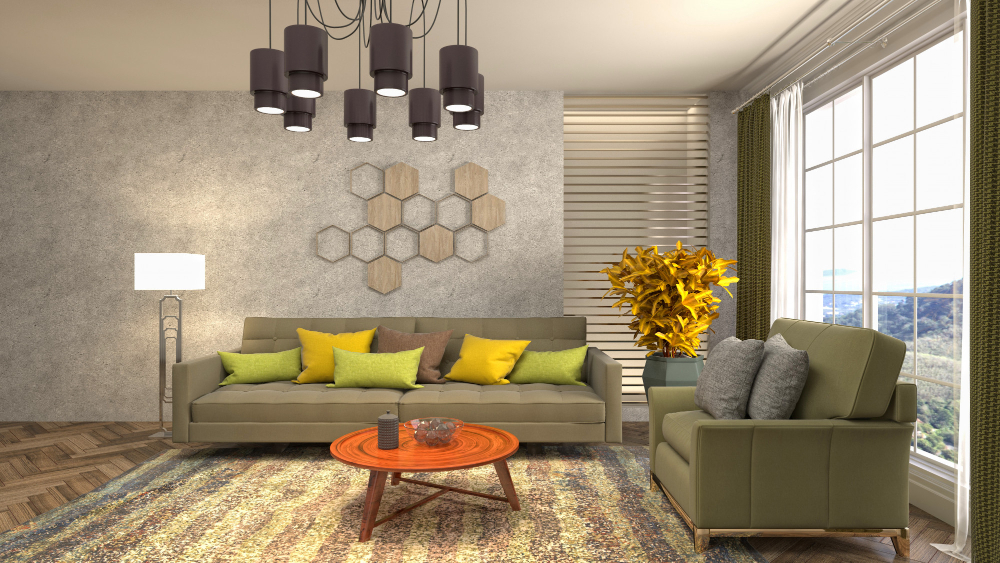Revolutionizing the Furniture & Home Decor Industry: A Digital Transformation Roadmap for CIOs and CMOs

The furniture and home decor industry is rapidly evolving, fueled by digital transformation that is reshaping how businesses design, produce, sell, and support their products. With customers demanding personalized, seamless, and immersive experiences, adopting technologies such as advanced 3D modeling, augmented reality (AR), dynamic pricing, and AI-powered customer service is no longer optional—it's essential.
For Chief Information Officers (CIOs) and Chief Marketing Officers (CMOs), navigating this transformation is critical to driving competitive advantage and long-term growth. This article delves into key innovations across the sector and highlights how Virtual Delivery Centers (VDCs) are enabling businesses to adapt and thrive in this digital-first era.
Gone are the days of manual sketches and guesswork. Advanced 3D modeling tools like SketchUp, AutoCAD, and Rhino empower designers to create detailed and precise concepts, enabling real-time collaboration and visualization. Complementing this, CNC machines and automated production systems streamline manufacturing, allowing businesses to offer mass customization—a balance of personalization and scalability.
Key Innovations:
3D Modeling: Tools that enhance design accuracy and client collaboration.
CNC Automation: Minimizes errors and accelerates production.
Mass Customization: Scalable solutions to meet consumer demand for unique, tailored products.
VDC Insight:
Virtual Delivery Centers provide access to design and production experts who optimize software implementations, automate workflows, and enable real-time collaboration across geographies. With VDCs, businesses can tap into global talent to scale operations without physical barriers.
The shift toward online shopping has redefined the customer journey. eCommerce platforms like Shopify Plus and BigCommerce power seamless online transactions, while AR enhances customer confidence by enabling virtual furniture placement in their homes. Industry leaders like IKEA and Wayfair have set benchmarks with AR apps that reduce return rates and improve engagement.
Key Innovations:
eCommerce Platforms: Offer seamless search, payment, and personalization capabilities.
Augmented Reality: Allows customers to visualize furniture in their spaces.
Personalized Recommendations: AI-driven algorithms tailor offerings to individual preferences.
VDC Insight:
VDCs connect businesses with AR developers, eCommerce specialists, and digital marketing experts to create immersive shopping experiences. These centers also enable rapid deployment of scalable online platforms tailored to specific business needs.
Delivery and assembly are critical to customer satisfaction. Advanced logistics platforms such as DispatchTrack and Onfleet optimize delivery routes and schedules, while on-demand assembly services like TaskRabbit enhance the post-purchase experience by offering professional setup.
Key Innovations:
Smart Logistics: Real-time tracking and optimized delivery routes.
On-Demand Assembly: Partnering with service providers to ensure professional setup.
Customer Flexibility: Easy rescheduling and precise delivery windows.
VDC Insight:
Through VDCs, furniture brands can collaborate with logistics specialists to implement advanced scheduling tools and connect with assembly service providers. VDCs also enable data-driven decision-making to improve last-mile delivery performance and reduce operational costs.
Modern consumers expect instant and proactive support. AI-powered tools like chatbots, virtual assistants, and predictive analytics are transforming customer service by anticipating needs, offering personalized assistance, and freeing human agents to focus on complex issues.
Key Innovations:
AI Chatbots: Provide instant responses to common queries.
Proactive Support: Predictive analytics anticipate customer needs, enhancing satisfaction.
Omnichannel Engagement: Unified support across chat, email, and voice platforms.
VDC Insight:
VDCs deliver access to customer service automation experts who implement AI-driven solutions and design proactive engagement strategies. This ensures brands can meet modern consumer expectations while maintaining cost efficiency.
Dynamic pricing tools like Prisync and Competera adjust prices in real time based on demand and competitor activity. Data-driven marketing strategies deliver personalized offers and recommendations, fostering deeper connections with customers and driving higher conversion rates.
Key Innovations:
Dynamic Pricing: Ensures competitiveness while maximizing profitability.
Personalized Marketing: Leverages customer data to deliver targeted content.
Customer Insights: Advanced analytics for understanding buyer behavior.
VDC Insight:
VDCs provide marketing and pricing specialists who deploy advanced tools, refine strategies, and enhance personalization efforts, enabling brands to remain agile and responsive in competitive markets.
Virtual Delivery Centers bring unprecedented flexibility and expertise to furniture and home decor brands. By bridging the gap between innovation and execution, VDCs enable businesses to scale and adapt in real-time.
VDC Benefits for the Industry:
On-Demand Talent: Access experts in design, eCommerce, logistics, and customer service without long-term commitments.
Cost Efficiency: Scale resources based on demand, optimizing operational budgets.
Rapid Innovation: Quickly adopt and integrate advanced technologies like AR, AI, and CNC automation.
Global Collaboration: Enable seamless teamwork across geographies through cloud-based tools.
Data-Driven Decisions: Leverage analytics to refine strategies and improve customer engagement.
By partnering with VDCs, furniture brands can stay ahead of trends, optimize processes, and deliver unparalleled customer experiences.
The digital transformation of the furniture and home decor industry is not a distant possibility—it’s happening now. By embracing technologies such as 3D modeling, AR, dynamic pricing, and AI-driven customer service, businesses can meet the evolving demands of consumers and create competitive differentiation.
With Virtual Delivery Centers, furniture brands gain the agility and expertise needed to navigate this transformation, turning challenges into opportunities for growth. In a world where customer experience reigns supreme, VDCs ensure businesses can innovate, adapt, and thrive.
Ready to redefine your furniture and home decor business? Explore how Virtual Delivery Centers can accelerate your digital transformation and position your brand for long-term success.

For modern telecom enterprises, delivering exceptional QoS is no longer optional—it’s a brand differentiator and a strategic lever for growth. Static provisioning models won’t cut it in a world of hyper-dynamic data usage.